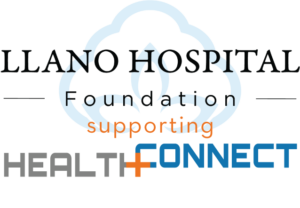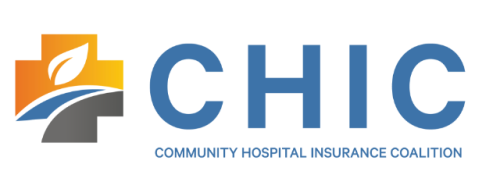Pilot program taps the power of community connection
Health Care Spending Projected to Surpass $7 Trillion by 2031
The Best is Yet to Come
Brant Couch
Time flies when you’re engaged in important work… I think that’s why I was surprised to realize we have been managing the TORCH Insurance Program for 15 years. 
Based on the growth of the program and the success of its participating hospitals, the overarching sentiment at the annual TORCH conference was that the best is yet to come.
I believe the success of TORCH is attributable in large part to the people who lead and manage the organization. And, beyond the insurance program, TORCH serves as a model for other state associations because of its history of collaboration.
The power of collaboration was clear during the TORCH conference this spring, I was fortunate enough to host a panel discussion titled “Never Go It Alone”.
Never Go It Alone
TORCH CEO John Henderson, Electra Hospital District CEO, Rebecca McCain, and Rex Jones, the then CEO of the Arkansas Rural Health Partnership (ARHP) joined me on stage where we discussed some of the vital challenges and most significant opportunities ahead for rural hospitals.
One of the highlights of our discussion was Rex’s description of how he has looked to TORCH for inspiration and strategies for growing ARHP. “When I saw what TORCH was doing it just looked like what we were trying to accomplish but I could see it’s light years ahead,” he said.
John agreed saying, “The essence of TORCH is collaboration in and of itself. That’s the whole point. It’s the reason we exist. We’re better together, there’s strength in numbers and we’re doing things among 158 hospitals that they can’t do on their own.”
Macro Ideas – Micro Wisdom
Rebecca added that collaboration is more than wisdom sharing. “That’s what happens on the macro level – it’s thinking outside of your hospital with the help of your fellow CEOs,” she said. “What makes an even bigger difference is when you are given the support you need to actually implement the ideas and innovations – that’s the micro level… it’s how big ideas are turned into reality.”
By encouraging collaboration among its members, organizations like TORCH create a platform for the exchange of best practices, innovative ideas, and successful strategies. By sharing experiences and lessons learned, member hospitals have been able to collectively enhance their operational efficiency, improve clinical outcomes, and provide higher quality care to patients.
Through collaboration, rural hospitals gain access to a wealth of knowledge, tapping into collective wisdom that helps them navigate challenges specific to their rural settings, including recruitment and retention of healthcare professionals, efficient resource allocation, and technology adoption.
Looking Ahead
There will be new challenges to face, along with the old, persistent challenges rural hospital leaders have been wrestling with for years. There will also be new opportunities and new ways to meet the challenges.
A good example is how Rebecca and her team overcame the daunting legal and regulatory challenges unique to creating a Clinically Integrated Network (CIN). During the panel discussion she said, “The CIN program was a big win because we had to think bigger than ourselves and our hospital. We had to expand our vision to include the physicians and other care providers we were partnering with.”
“We have been able to work together to improve patient care, share resources, and streamline processes. By pooling resources and expertise, we are developing standardized protocols, best practices, and clinical guidelines to ensure consistent and high-quality care. And, by leveraging economies of scale, our hospital can reduce costs, increase efficiency, and expand its service offerings.”
Knowing the ins and outs of getting a CIN off the ground and running smoothly is something Rebecca and her team can now share with other hospitals.
Power of Many is the Power of One
HealthSure is proud of its TORCH track record and our growing success in developing and supporting similar programs across the country. For example, the Rural Hospital Insurance Alliance we are managing in conjunction with the National Rural Health Association has seen steady growth since its inception five years ago.
John Henderson said it best as we wrapped up the panel discussion, “Together we are better able to achieve not only some very good things, but also, together we are much more powerful when it comes to fighting off the bad things.”
Please contact us if you wish to learn more about our state and national programs for rural hospitals.
Pilot program taps the power of community connection
What if there was a purposeful, structured, and continuous conversation within your rural community about protecting and improving the health of its hospital?
Throughout 2022 and continuing through 2023, five rural Texas hospital CEOs have been finding answers to this questions thanks to a HealthSure initiative called HealthConnect.
What is HealthConnect?
Barry Couch, HealthSure chairman and founder, teamed up with John Henderson, CEO of the Texas Organization of Rural and Community Hospitals (TORCH), to launch the HealthConnect program at a handful of TORCH member hospitals.
Funded in part by a grant from Texas Mutual, the program’s mission is to ensure hospital and community leaders have the means to initiate, nurture, and sustain the strongest possible connection between the community and its hospital.
This mission is driven by an increasingly urgent need to stem the tide of rural hospital closings across the United States and the deterioration and sometimes the disappearance of the communities those rural hospitals once served.
The HealthConnect team consists of rural health advocates, researchers, and facilitators.
Based on over six decades of experience in rural health, the team starts the HealthConnect process by researching local economic, demographic, and sociographic conditions as well as the key performance indicators of the rural hospital. They then compare their findings to the national averages to estimate the health of the hospital and the strength of community connection with the hospital.
This research provides common ground for an ongoing, structured series of working meetings that include community members, community leaders, and the hospital’s CEO. These sessions are facilitated by the HealthConnect senior team members.
The Community Cares
Delivery of the program has been staggered to accommodate the time it takes to complete the necessary research and the facilitators’ availability.
Among the five participating hospitals, the Llano hospital – owned by MidCoast Central and managed by Hatch Smith Jr., CEO and Administrator – was one of the first to engage in the HealthConnect program.
When a hospital engages in the process, the initial research stage includes identifying community leaders and influencers who are then asked to complete a detailed survey. The survey results are tabulated and presented at a kickoff meeting along with the HealthConnect team’s other research results.
As Hatch describes it, the program is going forward with three additional meetings – called HealthConnect Forums – already completed. “My original goal was to get at least one or two meetings but even in an ice storm when the town was shut down, people still came, and our attendance has since held strong.”
Describing who has been asked to participate, Hatch says, “It’s purposely all over the map. It ranges from local officials, city councilmen, the mayor. We have faith leaders, we have business owners, retirees, with some diverse backgrounds, retired doctors, retired attorneys.”
“They are not bashful about participating. They are interested in understanding what happens and there is a consistent wanting for this hospital to do well. And sometimes it’s great when they participate because you realize what their perception is, and a lot of times it’s completely off.”
The word on the street
Elaine Schuessler is one of the over 30 participants and she says the ongoing HealthConnect Llano Forums are, “….a safe space that allows unity to drive innovation and forward thinking so that we can overcome challenges in ways we maybe didn’t think were possible.”
Thanks in part to the facilitation provided, Elaine says, “These meetings have allowed leaders from other organizations in our community, people who maybe appear to be working in silos, to come together. We’re now out there advocating for the hospital as a whole… the message is clear, our goals are clear.”
Pat McDowell, another forum participant says, “Normally complacency is a barrier. We’re not seeing that. We’ve had three meetings and it’s been my experience that by the third meeting you would expect attendance to dwindle. We’re not seeing that and that’s a very good sign.”
Where to next?
The other participating Texas hospitals progressing through the HealthConnect process include Cuero Regional Hospital, Electra Memorial Hospital, Coryell Memorial Hospital, and Mitchell County Hospital District.
So far, with some unique variations, the program has been well accepted by the communities these hospitals serve.
“We’re constantly refining how we deliver the program,” Barry Couch says. “It’s been eye-opening and gratifying at once to see the level of participation and more importantly – community engagement – that occurs when community leaders have the opportunity to engage in a purposeful conversation about what is important to them as individuals and what they feel is vital for the health of their communities.”
John Henderson adds to this by saying, “It’s more than just a conversation. As soon as the program is launched, the participants identify the opportunities they wish to go after, and the issues they wish to resolve. They form action committees and get to work.”
Barry says, “I can see a future, not too far off, in which the HealthConnect process becomes a standard best practice all rural hospital leaders employ to ensure their community is well served and in turn, is serving the hospital well.”
Health Care Spending Projected to Surpass $7 Trillion by 2031
Estimates from the Centers for Medicare and Medicaid Services (CMS) project annual U.S. health care spending to reach approximately $7.2 trillion in 2031. In 2022, health care expenditures were expected to hit $4.4 trillion, growing at a rate of 4.3%. Economic growth outpaced health care growth in 2022, resulting in a decline of projected health care spending as a share of gross domestic product (GDP) from 18.3% in 2021 to 17.4% in 2022; however, from 2022 through 2031, U.S. health care spending is expected to grow on average 5.4% per year compared to a 4.6%increase in GDP over the same period. By 2031, health care is expected to account for 19.6% of the United States’ GDP.
According to CMS’ projections, medical spending across all major sectors returned to pre-pandemic levels, with hospitals being the biggest cost driver in 2022. From 2022 through 2031, hospital spending is projected to increase faster (5.8%) than physician and clinical services (5.3%) and prescription drugs (4.6%). Additionally, the average price growth for hospitals (3.2%) is estimated to be higher than that of prescription drugs (2.2%) and physician and clinical services (2%). As a result, health care costs will likely become a larger part of American household spending. However, the Inflation Reduction Act is projected to lower out-of-pocket spending on prescription drugs for 2024 and beyond.
Changes to federal policies, together with the United States’ aging population, are anticipated to result in Medicare experiencing the highest rate of growth among major payers, increasing 7.5% annually from 2022 through 2031. Medicare spending is expected to increase from a rate of 4.8% in 2022 to 8% in 2023, with expenditures surpassing $1 trillion. Medicaid expenditures are forecast to grow 5% through 2031; however, enrollment in the program is expected to decline because of state determinations. Private health insurance spending is projected to grow 5.4% a year.
In 2022, the insured share of the U.S. population reached a record high of 92.3%, in large part due to gains in Medicaid and Health Insurance Marketplace plans, which benefited from pandemic-related relief including a moratorium on Medicaid redeterminations and expanded eligibility for subsidized premiums.
What This Means
The CMS’ report highlights how health care spending will increase over the next decade. Understanding how health care spending will increase can help employers act now to protect themselves against increasing health care costs and better support their employees.



